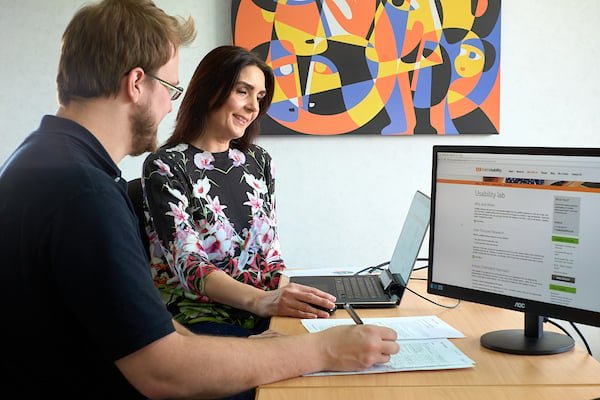A successful website relies on more than just the people in the digital team. Marketing, product, policy and many other departments will have a role to play.
The problem is, not all those involved will see things from a user perspective. There will be organisational messages and priorities that many want to push and the website is often viewed as the perfect platform for this, without considering the experience of your users.
User evidence is a powerful way to avoid this problem, bring people together and develop a shared view of how to improve a website with your users in mind.
The best way to do this? Get the whole team together to observe live research, then talk about the outcomes.
Step 1: Observe testing in real-time

Observing research as it happens gives your team much greater insight into your users and their issues. Often what users say is different to what they do so by watching testing as it happens you get to better understand both tester’s behaviours and their attitudes. 17 years of testing has taught us that observing live has a lot more impact than watching videos – you can really feel the tester’s pain!
Observation of the research on its own is not enough, however: everyone develops their own interpretation of why a user behaved in a particular way based on their own experiences, values, prejudices and agendas. Consequently, a group of people can watch the same research but walk away with very different interpretations
Step 2: Agree the issues

This is why you need to get your team together and discuss what they have just watched. This discussion challenges pre-existing mental models and helps you all gain agreement about the issues with the site. When we are facilitating these types of discussions the most used commonly used phrase is ‘what did the user do’ – grounding the discussion in the users’ experience.
During the observation, ask your team to be ‘active’ observers and get them to write down every issue they see on a sticky note – whether it be what a user did, what a user said or an issue with the website. These then get mapped on the wall of the observation room and can be used to guide the discussion.
This process helps you and your team to collaboratively ‘sense-make’, enabling everyone in the room to take ownership of the research results, develop a collective view of the issues and agree the priority issues to be addressed.
Step 3: Agree the actions

Once everyone is agreed on what the issues are, you can begin deciding how to fix them. By including all key stakeholders in this discussion, you can ensure the planned actions fit with any organisational constraints such as resourcing, financial, technical and political.
This approach also speeds the process from research to action as it minimises the need for subsequent meetings to discuss the outcomes and agree actions, giving you and your team back valuable hours in the day.
Read more: How to write a usability testing report, What is the purpose of usability testing


